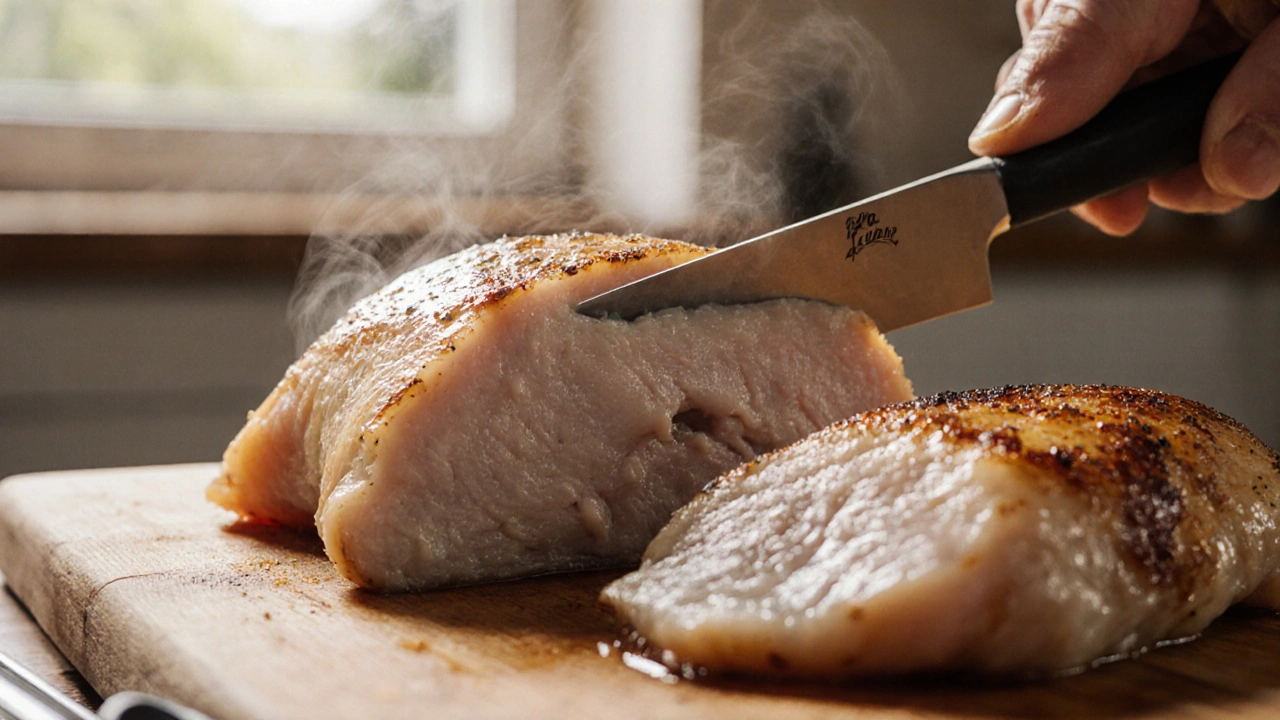Chicken Cooking Tips: Juicy, Flavorful Results Every Time
When you cook chicken, a versatile, widely consumed protein that requires careful handling to avoid dryness and undercooking. Also known as poultry, it's one of the most common proteins in home kitchens, but also one of the most often ruined by wrong techniques. Too many people end up with dry, bland chicken because they skip the basics—like letting it rest, using a thermometer, or understanding how fat and moisture work together. It’s not about fancy gadgets or expensive ingredients. It’s about knowing what actually makes chicken juicy and safe.
The secret isn’t just in the heat. It’s in the moisture barrier, a layer that traps natural juices during cooking, often created by fats like mayonnaise or oil. That’s why spreading mayo on chicken before roasting works better than butter for some—it’s not about flavor, it’s about science. The emulsion holds water in, while the fat conducts heat evenly. You don’t need to be a chef to use this. You just need to know it’s possible. And if you’re worried about food safety, internal temperature, the single most reliable indicator of doneness, not color or juice clarity. The FDA says 165°F is the target, but many pros pull chicken out at 160°F and let it rest—the temp keeps rising, and the meat stays tender. Skip the guesswork. Buy a $15 thermometer. It’s the cheapest upgrade to your kitchen.
Seasoning matters too. Salt isn’t just for taste—it changes how proteins behave. Dry-brining chicken with salt for a few hours before cooking pulls moisture to the surface, then lets it reabsorb, turning the meat into its own brine. No fancy marinades needed. Just salt, time, and patience. And don’t overcrowd the pan. That’s how you get steamed chicken, not browned, crispy skin. Give it space. Let it sear. Let it breathe. These aren’t tricks. They’re fundamentals.
What you’ll find below are real, tested methods from people who cook chicken every day—not just for show, but because they know how much better it tastes when done right. From slow-roasted thighs to pan-seared breasts that don’t turn to rubber, these posts cut through the noise. No fluff. No myths. Just what works.

What Makes Chicken Moist and Tender? The Science Behind Juicy Chicken Every Time
Learn the science behind juicy, tender chicken with proven techniques like brining, proper temperature control, resting, and choosing the right cuts. No more dry chicken ever again.
More Detail